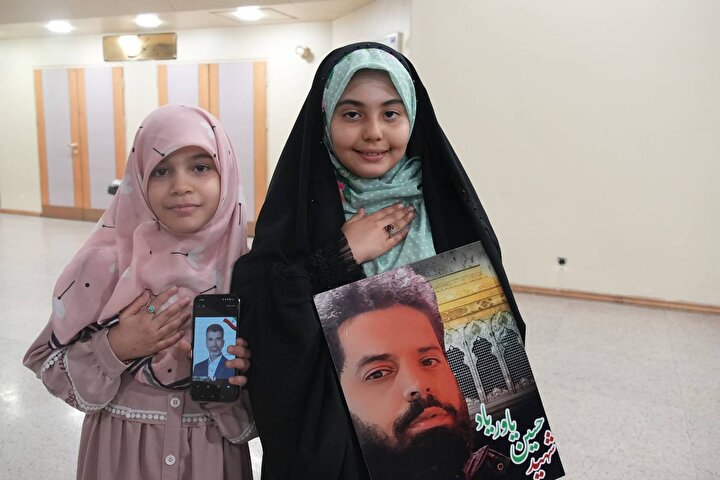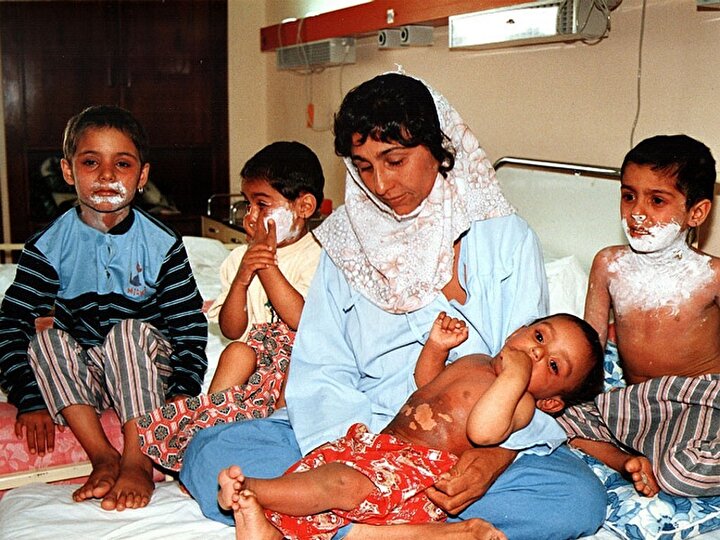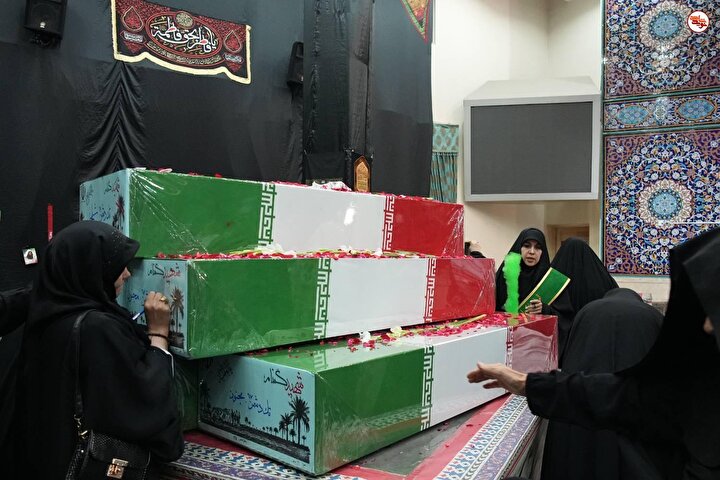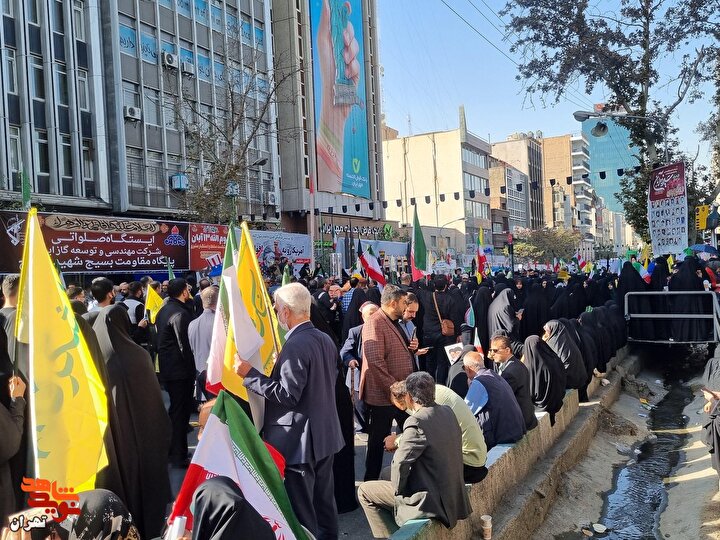
The necessity of writing Islamic revolution history
One of the valuable deeds of the Islamic Republic Documents Center is to write the history of the Islamic revolution. People’s memories, no matter how powerful, will forget memories as time passes.

Navideshahed:
Ali Mohammad Besharati is advisor to the head of the Expediency Council and a former activist of the Islamic revolution. He was born in the city of Jahrom. During the time of the public uprising against the Pahlavi regime, his house was one of the basic centers for the fighters of the Islamic revolution. Besharati has provided the Islamic Republic Documents Center with a note from the book "Islamic Revolution in Jahrom”, a summary of which follows.
The book Islamic Revolution in Jahrom and the likes of it have some side benefits, that is, in them, everything has been recorded, whether for positive or negative personalities. This is a lesson for influential revolutionary people, because their value is not wasted in this world and one should not wait only for the hereafter. Also, as for negative personalities, it is clear that negative positions or relations with Pahlavi officials has not, nor will remain, hidden to the eyes of people.
In a city like Jahrom, which is 1200 kilometers away from Tehran, the words and deeds of people in the course of the Islamic revolution has not been recorded. We are not nationalists, but some times nationality looms large. For example, in the war of parties or the Honein war, the Prophet ordered that any of the clans fly their flags so that they would resist at least for the profile of their own.
The positive effect of writing the books about the Islamic revolution, is to put on show the revolution in the mirror of people. The beauty of the revolution is that any one of the beads of the rosary do their own job, but together they do one job, and that is to preserve the integrity of the Islamic revolution.
The book Islamic Revolution in Jahrom narrates the influential agents of the Islamic revolution. Of course the book Islamic Revolution in Jahrom is no story telling, and its text shows that it has not been written for one people or clan, but different people have had a role in it. The book lists the name of the clerics of the city of Jahrom, even those who were not so positive but attended the rallies at least once.
The people of Jahrom rarely talk and if the government knew what lack of water has done, it would have done the same for gardens of the city as it did for Lake Urmia. Jahrom produces 800 thousand tons of citrus fruits. That is, two provinces of Guilan and Mazandaran produce 2 million tons of citrus fruits while Jahrom produces 800 thousand tons.
There were water wells in houses in Jahrom and anyone would plant some date palms or lemon trees to provide for their annual consumption fo the fruits. In Jahrom, dates are food, that is, it would be sufficient if someone had dates as supper. Due to the fact that wells were being dug every day in houses, the depth of wells grew from 8 meters to 385. This shows what power is being put into digging wells, but the people of Jahrom do not speak a work. The people of Jahrom even launched the pressurized irrigation system before the revolution.
One good point about the book Islamic Revolution in Jahrom is to hearten people. In this book, the services of the city of Jahrom have been stated in details. I have to thank all those who helped write the book.
The great deed of the Islamic revolution was the role of the clergy in it. Since the time of the Qajar Dinasty when parties were being created, parties would chose themselves a title a la mod the West despite the fact that they did not have any followers and were not attractive either.
Parties and launching them grew more serious after the fall of Reza Khan in the Iranian calendar year 1320, since Reza Shah was in exile and the place of Mohammad Reza was not strengthened yet, therefore parties were active. But after the Iran coup of 1953, all the representations of freedom were oppressed and parties went into woodwork gradually, as parties such as Hezbe Mardom and Hezbe Irane Novin were launched.
Later on, the shah dismantled all these parties and chose Hoveida as the secretary general of the Rastakhiz party. People would sign up for the party with fear or for having bread and butter.
After the 1053 coup the national front was launched. They also wanted to imitate French intellectuals. The reason was that the people of the central council of the party had been graduated in France and they also wanted to have relations with the government. Therefore, they used to say that they believed in reforms based on the constitution, that is that shah remains and there is freedom. The national front were secular people.
If we had wished to put things in the hands of anyone besides clerics, they would have led us in the same path as they did the national front and movement of freedom. The last of freedom movement was supporting the shah. Bazargan only wanted to free elections for the Majlis, and he wanted nothing else. He even did not demand a president. But the clergy, led by ayatollah Imam Khomeini, rendered the fall of the kingdom and this effective role was acceptable only by Imam and a group of the clergies. Others did not dare make such calls.
The presence of people in the revolution was more obvious in cities where the clergy was more powerful. Jahrom is a prime example of that, and its people have been always interested in the clergy. In the time of the Pahlavi, there was no cinema or center for corruption in the city, because the clergy was there. The late ayatollah Haghshenaas, when he was going to visit ayatollah Shab Zendeh Dar, there was a street named Jomhouri Eslami. He was walking down that street and all the shop keepers would notify each other of his passing. They would come out of their shops and show respect for him. This was a symbol of the respect people paid to the clergy.
The book Islamic Revolution in Jahrom and the likes of it have some side benefits, that is, in them, everything has been recorded, whether for positive or negative personalities. This is a lesson for influential revolutionary people, because their value is not wasted in this world and one should not wait only for the hereafter. Also, as for negative personalities, it is clear that negative positions or relations with Pahlavi officials has not, nor will remain, hidden to the eyes of people.
In a city like Jahrom, which is 1200 kilometers away from Tehran, the words and deeds of people in the course of the Islamic revolution has not been recorded. We are not nationalists, but some times nationality looms large. For example, in the war of parties or the Honein war, the Prophet ordered that any of the clans fly their flags so that they would resist at least for the profile of their own.
The positive effect of writing the books about the Islamic revolution, is to put on show the revolution in the mirror of people. The beauty of the revolution is that any one of the beads of the rosary do their own job, but together they do one job, and that is to preserve the integrity of the Islamic revolution.
The book Islamic Revolution in Jahrom narrates the influential agents of the Islamic revolution. Of course the book Islamic Revolution in Jahrom is no story telling, and its text shows that it has not been written for one people or clan, but different people have had a role in it. The book lists the name of the clerics of the city of Jahrom, even those who were not so positive but attended the rallies at least once.
The people of Jahrom rarely talk and if the government knew what lack of water has done, it would have done the same for gardens of the city as it did for Lake Urmia. Jahrom produces 800 thousand tons of citrus fruits. That is, two provinces of Guilan and Mazandaran produce 2 million tons of citrus fruits while Jahrom produces 800 thousand tons.
There were water wells in houses in Jahrom and anyone would plant some date palms or lemon trees to provide for their annual consumption fo the fruits. In Jahrom, dates are food, that is, it would be sufficient if someone had dates as supper. Due to the fact that wells were being dug every day in houses, the depth of wells grew from 8 meters to 385. This shows what power is being put into digging wells, but the people of Jahrom do not speak a work. The people of Jahrom even launched the pressurized irrigation system before the revolution.
One good point about the book Islamic Revolution in Jahrom is to hearten people. In this book, the services of the city of Jahrom have been stated in details. I have to thank all those who helped write the book.
The great deed of the Islamic revolution was the role of the clergy in it. Since the time of the Qajar Dinasty when parties were being created, parties would chose themselves a title a la mod the West despite the fact that they did not have any followers and were not attractive either.
Parties and launching them grew more serious after the fall of Reza Khan in the Iranian calendar year 1320, since Reza Shah was in exile and the place of Mohammad Reza was not strengthened yet, therefore parties were active. But after the Iran coup of 1953, all the representations of freedom were oppressed and parties went into woodwork gradually, as parties such as Hezbe Mardom and Hezbe Irane Novin were launched.
Later on, the shah dismantled all these parties and chose Hoveida as the secretary general of the Rastakhiz party. People would sign up for the party with fear or for having bread and butter.
After the 1053 coup the national front was launched. They also wanted to imitate French intellectuals. The reason was that the people of the central council of the party had been graduated in France and they also wanted to have relations with the government. Therefore, they used to say that they believed in reforms based on the constitution, that is that shah remains and there is freedom. The national front were secular people.
If we had wished to put things in the hands of anyone besides clerics, they would have led us in the same path as they did the national front and movement of freedom. The last of freedom movement was supporting the shah. Bazargan only wanted to free elections for the Majlis, and he wanted nothing else. He even did not demand a president. But the clergy, led by ayatollah Imam Khomeini, rendered the fall of the kingdom and this effective role was acceptable only by Imam and a group of the clergies. Others did not dare make such calls.
The presence of people in the revolution was more obvious in cities where the clergy was more powerful. Jahrom is a prime example of that, and its people have been always interested in the clergy. In the time of the Pahlavi, there was no cinema or center for corruption in the city, because the clergy was there. The late ayatollah Haghshenaas, when he was going to visit ayatollah Shab Zendeh Dar, there was a street named Jomhouri Eslami. He was walking down that street and all the shop keepers would notify each other of his passing. They would come out of their shops and show respect for him. This was a symbol of the respect people paid to the clergy.
source: irdc.ir



